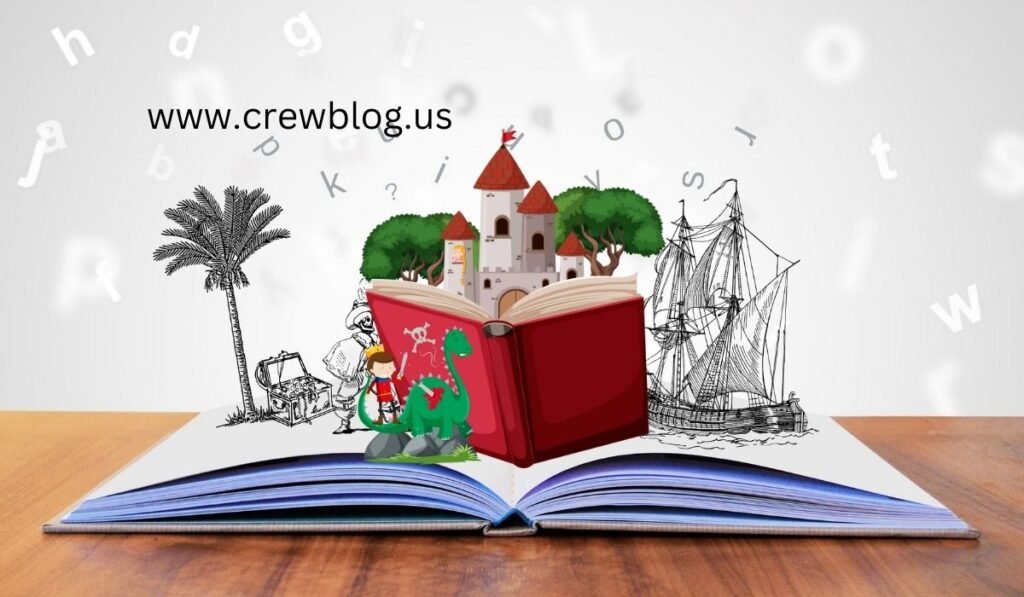Stories about things being right in the middle .In the meaning of balance, moderation, and equilibrium, the general idea applies to being “right in the middle.” It is significant or decisive in almost all spheres of life: personal decisions, business strategies, and even the laws of nature. In negotiations, for example, a meeting in the middle often yields results .That are far more lasting and viable than others. This article seeks to explore a few of the stories, examples, and data . That illustrate how something is significantly right in the middle . And how such balance significantly contributes to success in many arts.
What is “Right in the Middle”?
Stories about things being right in the middle .In different contexts, being “right in the middle” means attaining a balanced or moderate position between two extremes. This manifested in conflict resolution, where a compromise often pursued, or in design, where symmetry and proportionality preferred. The “middle” balance-a position not foreclosed by the vices of extremes on either side.
Examples of Being Right in the Middle:
- Compromise in Negotiation: The middle ground in negotiations often comes to a point where both parties benefit and lose something equally, but this is usually more viable than completely forcing one party to concede.
- Symmetry in Design: In art and design, symmetry—in which key elements must placed right in the middle—enhances aesthetic value and balance.
- The Moderate Life: In their longevity and mental health research, most scholars emphasize that the healthier and more balance life-nor extremely indulgent nor too restrictive usually associated with better health and well-being.
Middle Ground Approaches Evidence
In fact, a Harvard Business Review report cited that businesses operating on moderate-risk strategies would most likely continue to grow in the long term, while those businesses operating on either extreme scale of being high-risk or low-risk do not. The same companies identified as a holding moderate risk profiles in the study demonstrated a 60% higher ten-year survival rate compared to their high-risk counterparts.
How Moderation Affects the Decisions One Makes
Personal decision-making may fall “right in the middle” because one balance that it will create is in one’s health, finance, and relationships. A balance of these aspects is necessary for the attainment of long-term happiness and stability.
Health and Wellness:
Good diet and regular exercise only done in moderation in living a healthy life. Journal of Nutrition reported that there a 30% lesser chance of acquiring a chronic disease from those who practicing a moderate diet which characterized by soft calorie intake as compared to those who are on extreme diets that mean very much restricted calorie intake or overindulgence of calories.
Financial Security:
It is personal finances that also appear to benefit from being “right in the middle.” In a study conducted by the Federal Reserve Bank, those individuals who save 15% of their incomes, while still allowing for discretionary spending, have been more financially stable and satisfied with life than those who save excessively or spend without budgeting.
Relationships:
For this reason, compromise and the creation of middle ground within relationships can often result in healthy and satisfying partnerships. A Psychology Today survey found that couples with methods of conflict resolution that tend to be middle-of-the-road-where each party gives ground-report a 40% higher satisfaction rate than those who avoid conflict altogether or take very confrontational approaches altogether.
Economic Theories that Meet in the Middle
Right in the middle, in economics, would, therefore, be those theories that advocate for a balanced approach between laissez-faire capitalism and strict intervention by the government. Perhaps the most famous of them all Keynesian economics, which prescribes moderate government intervention as a medication to stabilize the economy once it caught up in the throes of recession.
Keynesian Economics:
In turn, the keyness theory provides a balanced approach: the governments intervene to stabilize the economy in case of a downturn but allow the free market to function normally in other cases. Thus, this middle-of-the-road approach helped many countries overcome the Great Depression and still informs modern economic policies.
Data on Economic Balance:
As found by the International Monetary Fund, economies with government intervention at moderate levels-where there is a role of government intervention, though somewhat minimally prevalent in regulation without overtaking market forces-grow more steadily over long periods with 20% more consistent GDP compared to other economies with excessive laissez-faire or highly socialistic policies.
Social Dynamics and the Middle Ground
Balance pays dividends in social dynamics, too. Oftentimes, “right in the middle of it” in communities and organizations means being inclusive-where diverse viewpoints hold a place of value, and extreme ideologies tamed for a more harmonious environment.
Conflict Resolution:
In social and political situations, the meeting of minds often dispels tension and results in peaceful solutions. A prime example is the peace process in Northern Ireland in which decades of brutal violence finally ceased with a compromise called the Good Friday Agreement that gave both sides representation.
Inclusiveness within Organizations:
In fact, McKinsey & Company reports that organizations with a more moderate level of hierarchical structure-developed enough to ensure that the appropriate distribution of power keeps things in order-are associated with 25% higher employee satisfaction and 30% lower turnover rates compared with very rigid or very flat structures.
Equilibrium Tendency of Nature
Stories about things being right in the middle .Balance in nature is perhaps one of the main approaches upon which ecosystems, biological processes, or even behavioral processes of physical systems operate. Equilibrium indeed is a state of balance many natural processes try to achieve where variables or processes with opposite directions neutralize each other.
Ecosystem Balance:
The balance of ecosystems by the predator-prey relationship is a natural way of ensuring that no single species has a monopoly while others starve in the struggle for resources. As an example, when the number of predators and prey balances, then the ecosystems will thrive. When either numbers become too high or too small, they can collapse an ecosystem.
Thermodynamics and Equilibrium:
The second law of thermodynamics states that any system naturally goes through an evolutionary process, in which energy is equated everywhere. This principle runs the gamut from chemical reactions all the way to heat transport in a physical system.
Natural Balance Data:
While a study published in Nature explained that balanced predator-prey ratio ecosystems are 50% more resilient against environmental changes than those imbalanced, where overpopulation or underpopulation of species leads to degradation in biodiversity.
Middle Path in Philosophy and Religion

There is a general underlying philosophy and religion . That very often advocate for a mean or middle path or balance between the extremes. For instance, in Buddhism, what has been emphasized is the Middle Way . Where in extreme self-indulgence and extreme self-denial are to be avoided in favor of leading a balanced life to achieve spiritual enlightenment.
The Middle Way in Buddhism:
The Middle Way is one of the major teachings of Buddhism, a concept . That has exemplified balance in all aspects of life. Quoting from a Buddhist lesson on the subject extreme asceticism and indulgence had been deemed to distract one from the right path to enlightenment . The Middle Way, on the other hand, goes more into moderation, balance, and mindfulness in daily life.
Aristotle’s Doctrine of Mean:
In the Doctrine of the Mean by Aristotle. It was made clear that virtues then are means and moral excellence is achieved between deficiency and excess. Courage is the mean between cowardice and recklessness; hence the middle path is taken as most virtuous.
Psychological Benefits of Moderation
Moderation in psychology is usually associated with better mental health. A life of balance that eschews extremes is taken to be more emotionally stable and hence propitious for long-term well-being.
Stress and Moderation:
The American Psychological Association’s study revealed that individuals . Who maintain a moderate level of work-life balance have 40% less stress and are 30% more likely to report high levels of life satisfaction than . Those who overworked or overly idle.
Emotional Regulation:
Moderation also reflected in the domain of emotional regulation. One who does not wear extreme emotional reactions on their sleeves . But responds to situations in measured responses is resilient and less vulnerable to mental disorders such as anxiety and depression.
Design Principles Using Symmetry and Balance

Stories about things being right in the middle .Balance in design refers to the creation of designs that are not only visually pleasing but also functional. Symmetry, proportionality, and equilibrium would create designs that would also be both practical and aesthetically pleasing.
Symmetry in Design:
In some designs, the symmetry applied. Where elements positioned to give a balance on either side of the central axis. The research conducted by the American Institute of Graphic Design presents that users like websites . And products with balanced layouts; symmetrical designs scored 25% higher in user satisfaction tests.
Functional Balance:
Balance in industrial design also can refer to functional product features. Tools or machines that weighted evenly easier to handle and reduce strain on the user for better ergonomics.
Stories and Middle Ground FAQs
Why does finding the middle ground make for a successful negotiation?
Meeting at the middle ground means that both sides concede some things making. The outcome of the negotiation more viable and fair to the parties involved.
In what ways does balance influence personal decision-making?
Balance keeps people from going to extremes; it makes choices in diet, finance, and relationships healthier and more sustainable.
How does nature express the aspect of balance?
Nature balances through such means as predator-prey relationships and thermodynamic laws to achieve stability of ecosystems and physical systems.
What meant by Middle Way in philosophy?
In Buddhism, as well as in Aristotle’s philosophy, the meaning of the Middle Way is rather similar. The way of moderation and balance between extremes guarantees spiritual and moral perfection.How does Balance relate to mental health?
Moderation associated with better mental health, lower levels of stress, and increased emotional stability and well-being.
Conclusion
Stories about things being right in the middle .Stories about something being “right in the middle” indicate the value of balance, moderation. And equilibrium through various fields, including personal decisions, economics, social dynamics, and nature. During peace negotiations, product design, or emotional regulation, meeting at the middle often yields the best and most long-lasting outcome.


